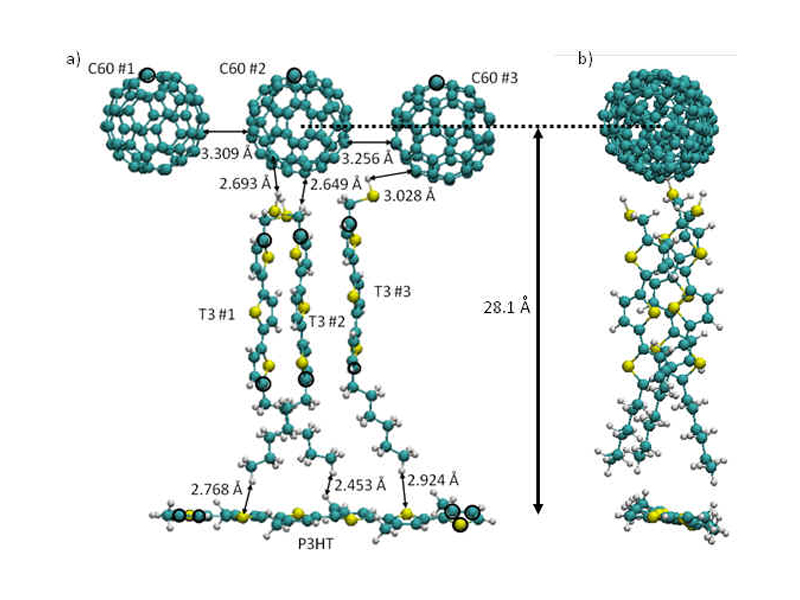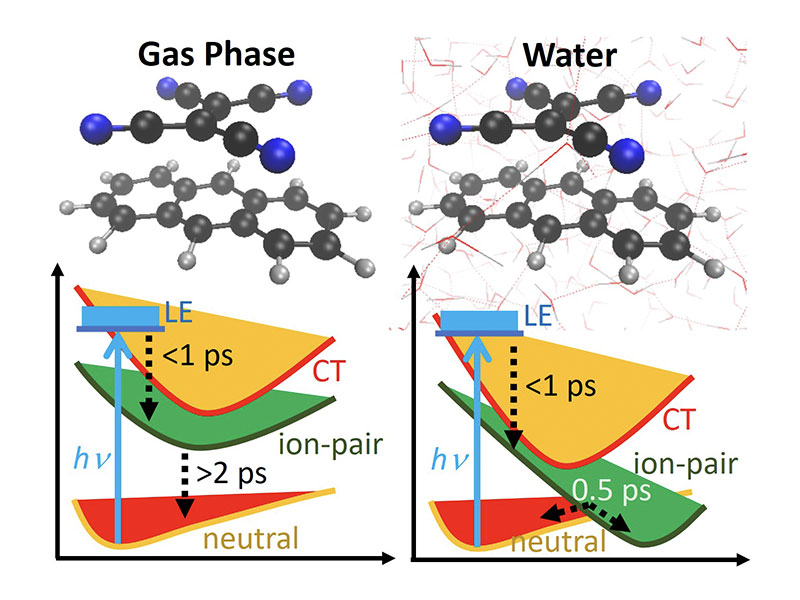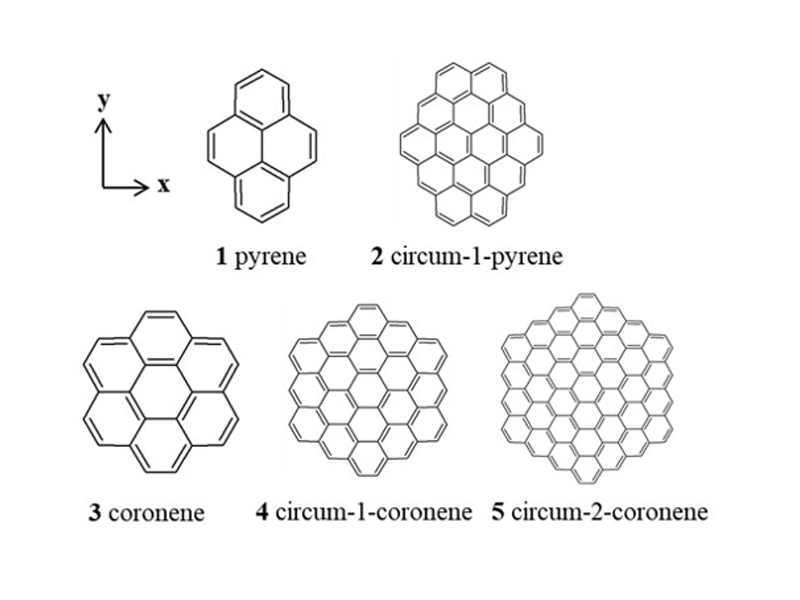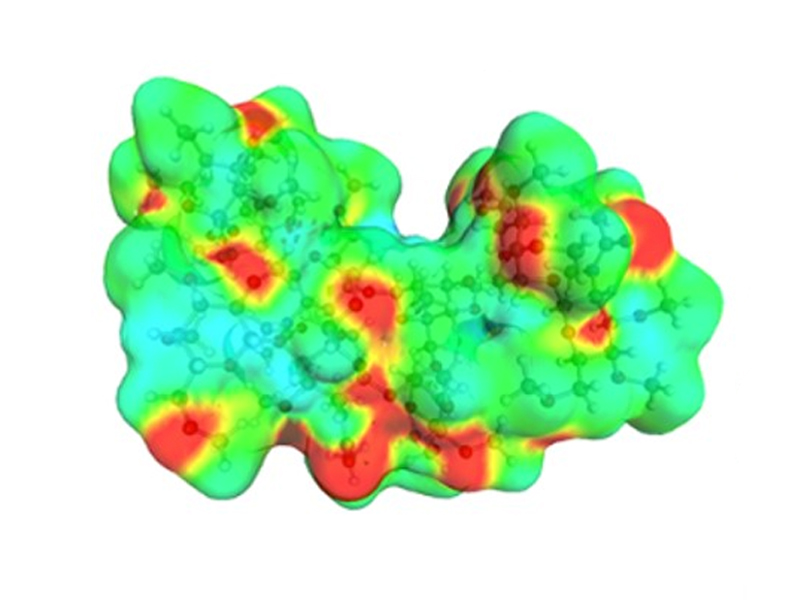A NEW METHOD FOR CALCULATING THE NONPOLAR SURFACE AREA (NPSA)
R. Dhakal, R. Nieman, D. C. A. Valente, Th. M. Cardozo, Bh. Jayee, A. Aqdas, W. Peng, A. A. J. Aquino, Y. Mechref, H. Lischka, H. Moussa
A General New Method for Calculating the Molecular Nonpolar Surface for Analysis of LC-MS Data
Memorial Issue for William L. Hase: Intern. J. Mass Spectrom. 461 (2021) 116495
A new and flexible method for calculating the NPSA of a molecule has been proposed based on the polarization charge densities obtained from a continuum solvation (CS) calculation. The sum of all nonpolar segments defines the CS-NPSA. From the known assignment of surface segments to the atoms in the course of the tessellation process, atoms can still be classified as contributing to the NPSA or to the polar surface or as not contributing at all to the solvent accessible surface since they are buried inside of the molecule.
The scripts for performing the CS-NPSA analysis are available for download from the following webpage CS-NPSA scripts.
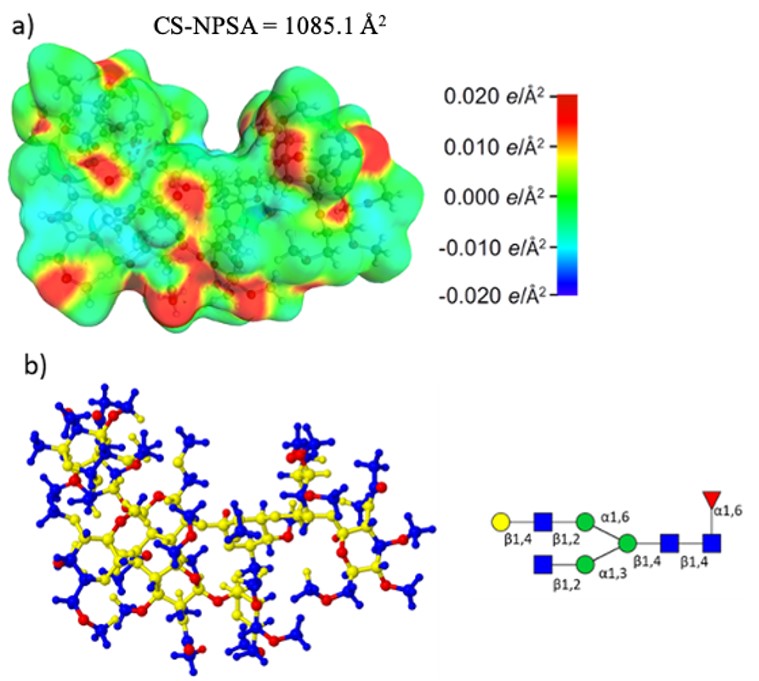
Biantennary standard glycan structures in gg conformation optimized using the PBE-D3/SV method in the COSMO/acetonitrile environment.
a) shows the polarization charges and the derived CS-NPSA surface value;
b) displays the polar atoms in red, nonpolar atoms contributing to the NPSA in blue, and buried nonpolar atoms that do not contribute to the NPSA in yellow.
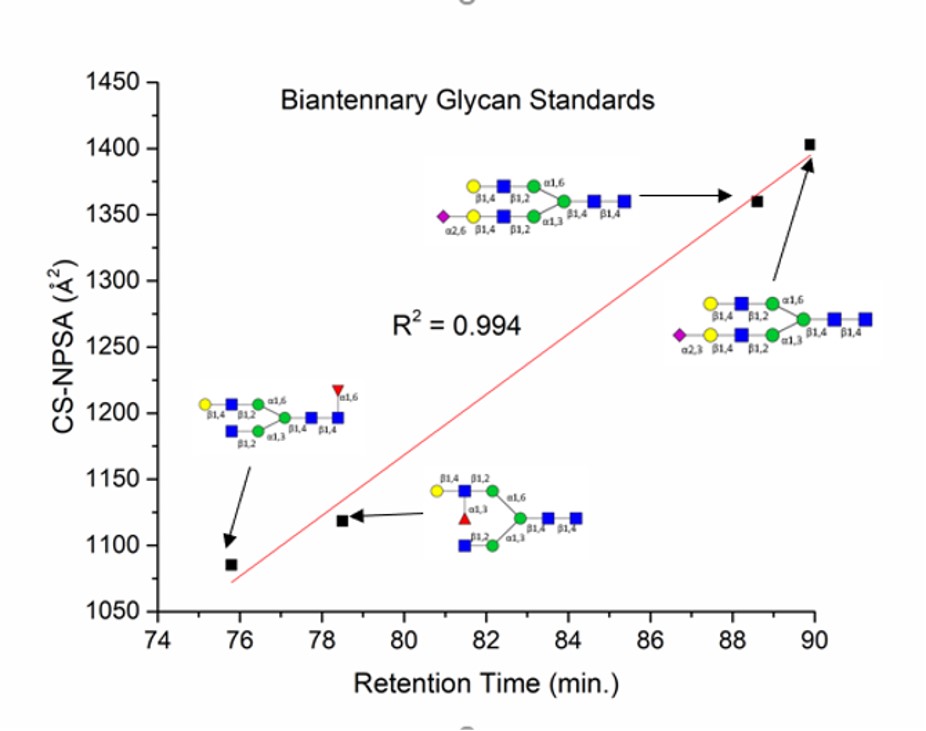
Linear regression correlating experimentally determined retention times with CS-NPSA values for the core- and branch-fucosylated isomers and the 2,3- and 2,6-sialylated isomers


